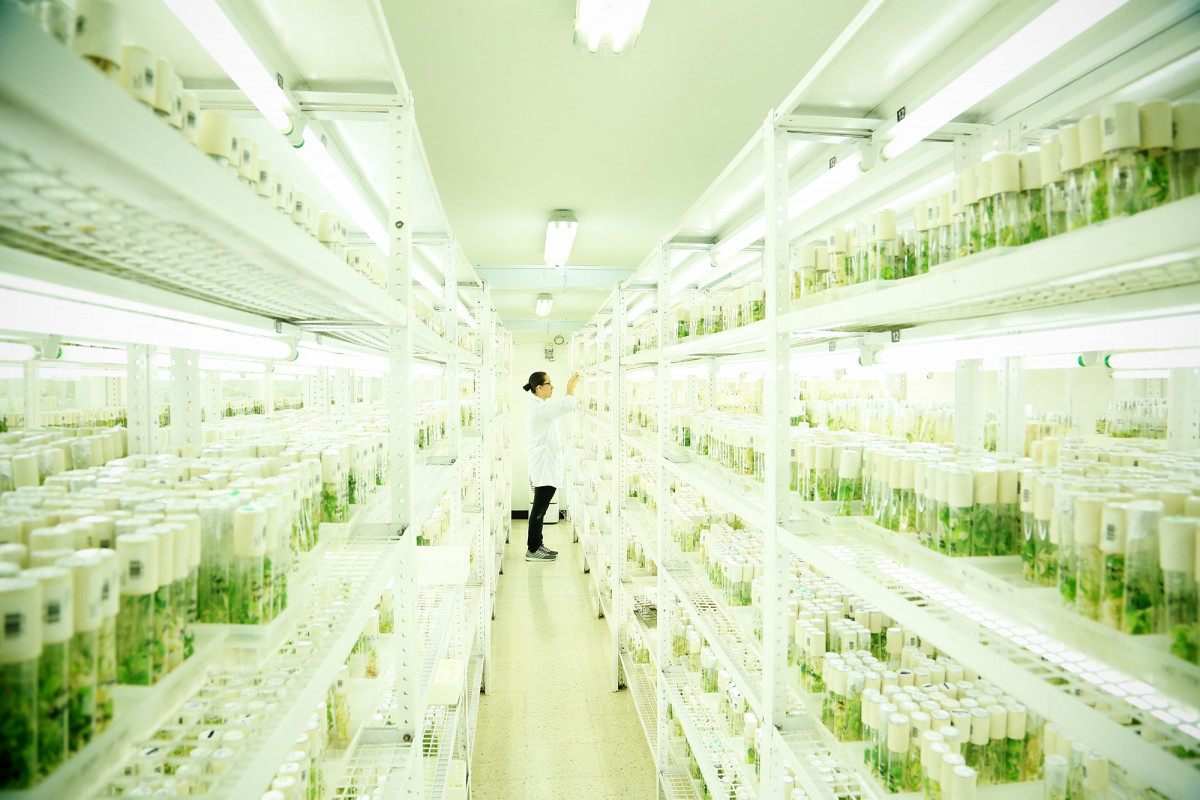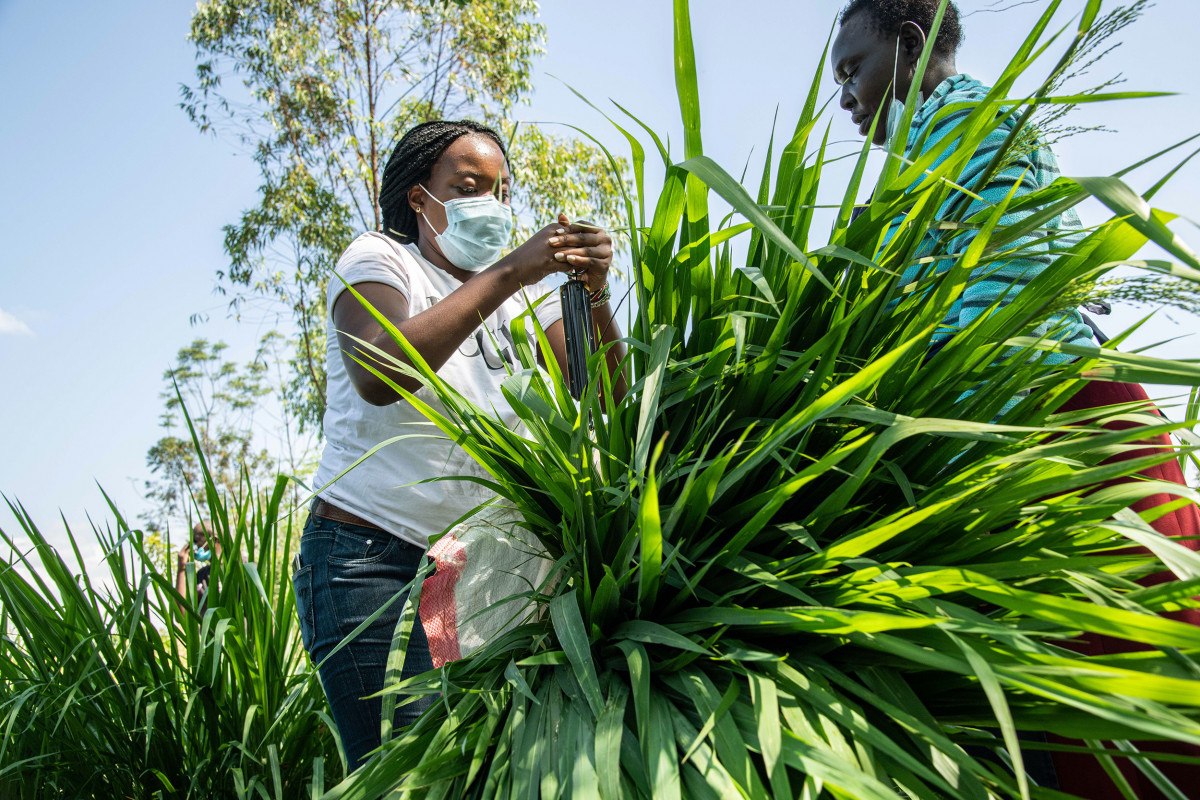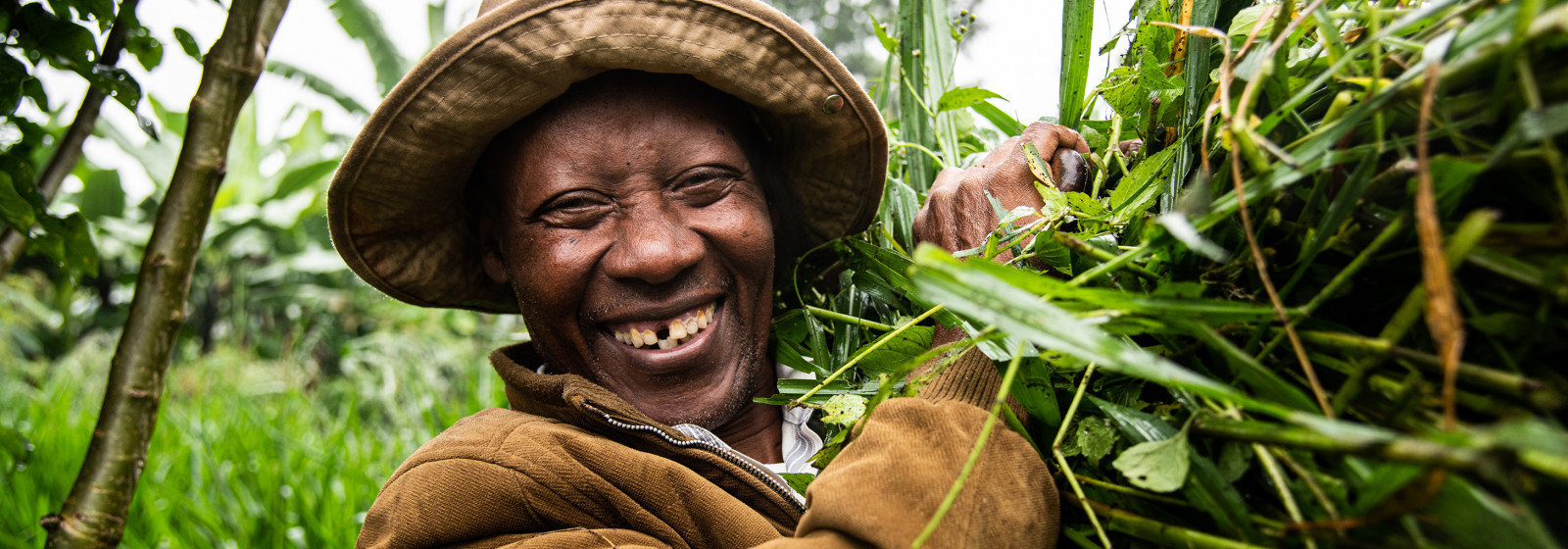2016 was a devastating year for many livestock farmers in Colombia’s Patía valley. Two years of severe drought saw vast swathes of pasture grasses shrivel up and die, along with many cows that depended on these grasses for food. Farmers who could afford to buy feed managed to scrape through but for most, their herds were decimated.
For beef and dairy farmer, Tito Angulo, the situation was thankfully rather less dire. A few years earlier he decided to participate in a project that included pasture improvement run by local Universidad del Cauca and the International Center for Tropical Agriculture (CIAT). The project gave farmers early access to a new hybrid of signal grass (Brachiaria Mulato II) bred by scientists specifically to survive periods of prolonged drought.
By the time the drought hit, Angulo’s plot was well established with Brachiaria grass and remained healthy even as the pastures around him became increasingly dry.
‘This plot has taken me out of great trouble,’ he said. ‘Although we are in a prolonged period of drought…[and] the pastures normally used in this region are running out very fast…[my plot] is still covered in abundant plant material.’
With drought predicted to become more severe in the future due to climate change, ensuring livestock farmers can cope will be critical.
‘That’s one of the reasons why our research program exists – to improve forage grasses and legumes to survive extreme and increasingly vulnerable weather and pest or disease outbreaks so that farmers can still earn a living,’ said Michael Peters, leader of the Tropical Forages Program at the Alliance of Bioversity International and CIAT.
Like Angulo, millions of people around the world depend on livestock production. But whether it is due to extreme weather, poor management or lack of funds, often herds are not adequately fed and therefore don’t produce as much meat or milk as they have the potential to. The support that farmers need in order to increase the productivity of their livestock varies greatly depending on which part of the world they are in, Peters says.
‘In Latin America, large areas are used as pastures for livestock production. Some say that areas need to be freed for other uses such as crop agriculture or conservation of natural habitats,’ said Peters who also heads the feeds and forages work of the CGIAR Research Program on Livestock.
‘However in the case of Africa, there is still a need for increased supply of nutritious food sourced from animals, such as meat, milk and eggs. In both cases we need to support livestock farmers to be more productive in smaller areas, but the approach to achieve this needs to be different.’
More productive in smaller areas
There are a number of ways that scientists are able to ensure that forage grasses and legumes are more productive in smaller areas. All involve going back to nature’s diversity and selecting the forages that have the traits farmers are looking for.
To make this easier and accessible to future generations, the Alliance of Bioversity International and CIAT, the International Livestock Research Institute (ILRI) and the International Center for Agricultural Research in the Dry Areas (ICARDA) manage forage genebanks – essentially a big vault where most of the world’s plant cuttings and seeds are stored. But what if none of the grasses in the genebanks are suitable?
‘Then we need to go for breeding,’ said Valheria Castiblanco, forage plant breeder at the Alliance of Bioversity International and CIAT.
This involves sourcing the genebank for multiple plants that you can combine to get the best traits of all.

‘Let’s say I have ‘Plant A’ which is highly productive but susceptible to pests, and ‘Plant B’ which is not susceptible to pests but not particularly tasty to livestock. So basically, I could breed both these plants together until one of their descendents is both productive and pest resistant, and also appealing to livestock. This plant would then be called a new hybrid’ Castiblanco said.
When scientists were looking to improve forages in Latin America, one of the grasses they turned to was Brachiaria. Brachiaria grasses are native to eastern Africa and were introduced to Latin America in the early 1950s. They quickly grew in popularity, being one of the few plants to thrive in the highly acidic soils where livestock are produced.
‘These brachiarias basically transformed these soils – from places where nothing would grow to becoming fertile,’ said Jacobo Arango, environmental microbiologist at the Alliance of Bioversity International and CIAT.
‘In regions where low fertility soils predominate, our research has shown that crops improve in productivity in plots where Brachiaria has been previously established, in comparison to naked soil or even other species. Brachiaria also helps the soil better store carbon and nitrogen, which is really important for mitigating climate change,’ he said.
Over the decades that followed, Brachiaria came to dominate pastures across Latin America. When a pest called the spittlebug started to attack the grass, plant breeders revisited the genebank to breed a Brachiaria cultivar that was resistant to it.
In the early 1990s, as phenotyping and genotyping technologies became more sophisticated, allowing a higher throughput, scientists at CIAT were able to screen several thousand Brachiaria breeding genotypes over various generations of crosses, enabling them to more quickly create a set of Brachiara hybrids that were resistant to common pests and could better tolerate challenging environmental conditions.
These screening tools also meant plant breeders were able to produce new varieties more quickly and more cost-effectively. Through partnerships with private sector companies, the seeds are being produced at a commercial scale, ready for farmers across the tropics to use.
‘To date, CIAT’s first four Brachiaria commercialised cultivars have been planted on more than one million hectares in about 50 countries in the global tropics,’ Peters said.
Back in Patía, Colombian beef and dairy farmers were seeing the difference when their animals had access to the improved forages.
‘We used to have very little production – we would get 4 litres per day of milk to sell. Today we reach 130 litres,’ said farmer Patricia Ulloa. Her husband, Jesús Velasco added that their income has increased from 40,000 pesos (approx. US$11) to 1.6 million pesos (approx. US$433) each fortnight.
With Brachiara booming in Latin America, researchers began to wonder how different varieties of Brachiaria would perform in their place of origin. Could East African farmers see similar benefits in livestock productivity as the farmers in Patía?
Back to the beginning
Sita Ghimire is lead scientist for Brachiaria grass research and development initiative at ILRI and he has been working with national agricultural research organisations, development partners and farmers across Sub-Saharan Africa to test and upscale Brachiaria grass varieties.
‘In pilot studies in Kenya and Rwanda, we asked the farmers which Brachiaria grass variety they preferred and we came up with a list of the top five. Because farmers are very diverse–some have well-irrigated land, many have no access to irrigation, farms differ in soil fertility–the need for varieties are very different. Some varieties are more adapted to a low fertility soil, some are good for drought, some are good for areas with moderate rainfall,’ he said.
Four of these farmer-selected Brachiaria grass varieties have been recently registered in Kenya and can now enter the Kenya national seed system, with hopes that this will make them more accessible and affordable for Kenyan farmers. Other countries across the continent may soon follow suit, thanks to the team of scientists that Ghimire has been collaborating with and training as part of the research program.

‘So far we have trained 30 scientists, some are in management positions, from different national research institutes across eastern and central Africa. I am working with them to obtain approval from their national institutions to register the Brachiaria grass varieties in their countries,’ he said.
Entrepreneurial farmers and small businesses across East Africa are springing up to commercially produce and sell Brachiaria seeds and other improved forage varieties. At the same, the formal market is slowly developing.
In addition to the four Bracharia grass varieties that farmers selected, there are already currently eight registered Brachiaria cultivars in Kenya. Five of them are already being distributed through the private sector – Brachiaria hybrids Mulato II, Cayman, Cobra, Camello and Panicum maximum Siambaza.
Developing informal and formal seed supply systems that complement each other is critical so that farmers are able to access affordable planting material, either seed or vegetative cuttings. Some forages – in particular grasses – are photosensitive so will only produce an economically viable quantity of seeds in particular environmental conditions.
‘Because of this, countries will still require procedures to facilitate exchange of Brachiaria seeds between each other,’ Peters said.
Given that the development of improved Brachiaria varieties in East Africa is a few decades behind Latin America, researchers are also focusing on improving the entire forage value chain - making farmers aware that improved forage varieties are available and are as valuable to grow as cash crops, as well as ensuring that they have access to high-quality forage seeds from local companies.
‘In Uganda, for example, more than half of the forage seeds are traded through informal systems. As a result farmers end up using poor quality forage seed. These same farmers also have difficulty accessing markets and aren’t getting good value for the milk they produce, so you can see why they lack the incentive to invest in forage production,’ said Ben Lukuyu, animal nutritionist and Uganda country representative for the International Livestock Research Centre.

With the increased adoption of improved grasses, one of the major challenges to producing high quality forages is a pest called spider mite, which is beginning to devastate Brachiaria grasses across East Africa.
‘It’s a pest we don’t have in Latin America, so we hadn’t bred a Brachiaria cultivar with resistance to it,’ said Castiblanco.
‘It’s like we are at the beginning when we first started breeding Brachiaria in Latin America–we thought it was a wonderful material, but it had a spittlebug pest susceptibility. Now we are at the same point in east Africa with spider mite.’
In collaboration with International Centre of Insect Physiology and Ecology (ICIPE), the plant breeders at CIAT are now busy searching for sources of resistance to spider mite and, in the process, building the tools required for a proper Brachiaria breeding program focused specifically on the needs of east African livestock farmers.
When times are lean
This research is personal to Castiblanco, whose cousin’s education was financed thanks to the impact that improved forages had on their family’s income.
‘We have a saying in Spanish which is still in use–epoca de vacas flacas–that I think illustrates how important livestock are to farming communities. It translates to ‘a moment of thin cows’, or basically ‘don’t ask me for anything’. That’s because ‘how fat your cows are’ determines the return of investment in the family for a whole season,’ she said.
‘With tough times ahead due to climate change, we need to do all we can to make sure all farmers across the tropics have fat cows and not damage the environment.’
Additional thanks to Stefan Burkart, from the Alliance of Bioversity International and CIAT, and Nelson Vivas, from the Universidad del Cauca, for their contributions to this story.
--
Learn more
- Journal article: LivestockPlus — The sustainable intensification of forage-based agricultural systems to improve livelihoods and ecosystem services in the tropics [2015]
- Journal article: Homecoming of brachiaria: improved hybrids prove useful for African animal agriculture [2015]
- Blog: Study finds 40% more milk and tens of millions of dollars in revenue possible for African farmers adopting new drought-resistant pasture grass [2016]
